Lakes that are changing the idea of the power of the nature
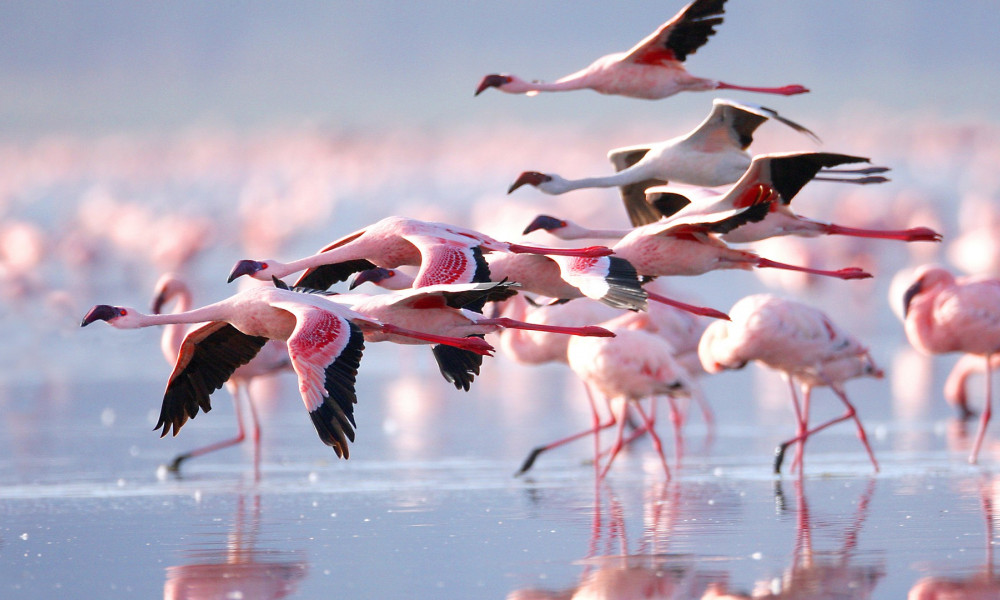
Five Flower Lake, China
The pond is the signature of the scenic Jiuzhaigou Valley at the foot of the Himalayas. Here it seems that a real world does not exist behind the mountains breathing with mists, there is only fantastic beauty of landscape.
Legend has it, that the gods come to wash to the clear waters of the Five Flower Lake, thus painting the pond in bright shades. Indeed, the water in this shallow multi-coloured lake comes in different shades of yellow, green, and occasionally it is saturated blue. Through the transparent veil of water, eyes see the mesmerizing canvas of some invisible artist: bottom is criss-crossed by ancient fallen tree trunks that create surrealistic silhouettes of the underwater kingdom.
The lake serves as one of the water reservoirs of the Nature Reserve, and at the same time it is a popular tourist magnet in the Heavenly Empire. Nevertheless, not only the obvious beauty of the Five Flower Lake is luring tourists. Its origin is shrouded in mystery, from which chill runs down the back spine. While nearby lakes occasionally dry, water level does not change in the rainbow reservoir, moreover, it does not freeze even in winter, in contrast to its neighbours. At first scientists thought this is because of benthic hot springs, divers repeatedly immersed into coloured water, but hot springs have not been found – tree trunks asleep forever as a dense flooring, they do not allow to study the bottom carefully.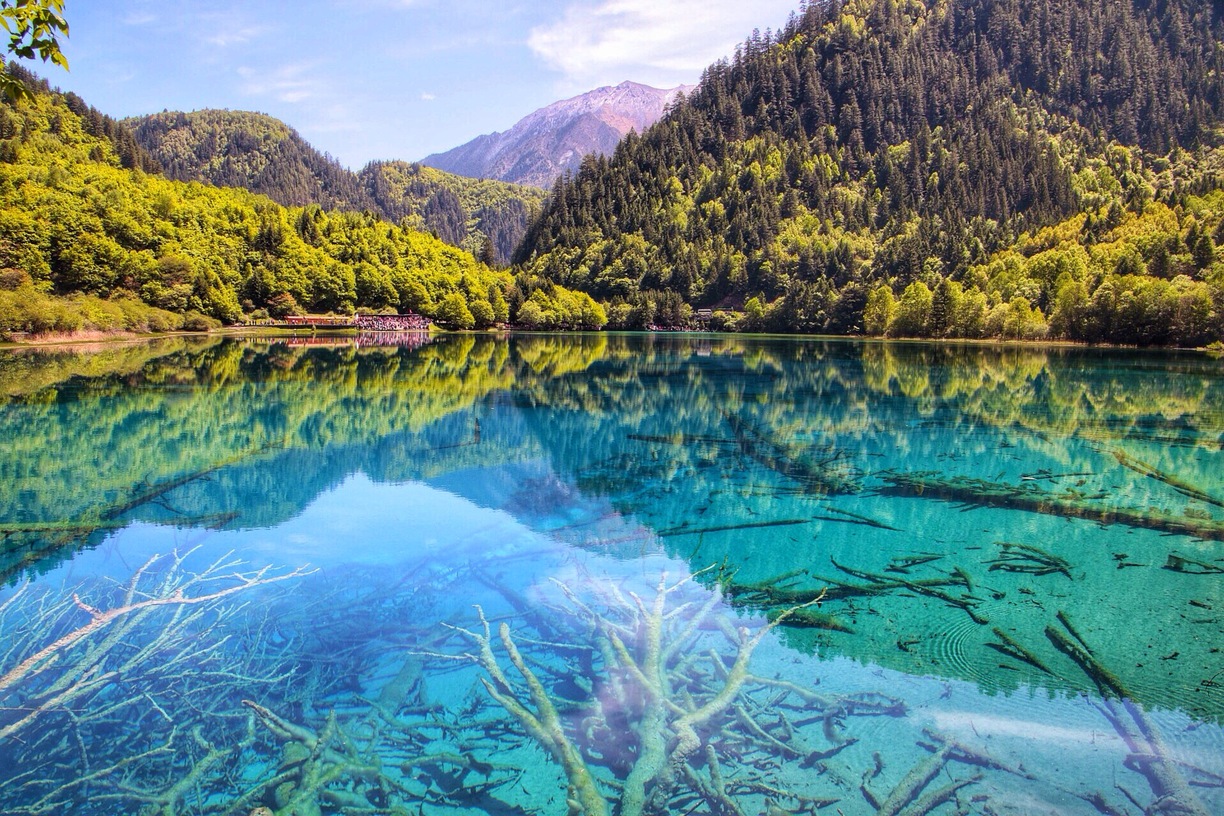 Photo trover.com
Photo trover.com
Lake Matheson, New Zealand
If we imagine a paradise, most likely, it will be similar to the unearthly panorama of the Lake Matheson. In calm weather, the surface of the dark water turns into a clear mirror showing truly stunning reflections of the New Zealand's majestic highest peaks Aoraki and Mount Tasman, tropical dense forest and unique scarlet sunset, hence, its second name is the Mirror Lake. Iconic landscape became a symbol of the country and the image to New Zealand postcards, stamps and calendars.
This gem of nature is located within the Westland Tai Poutini National Park. Sliding from the mountains 14 thousand years ago, Fox Glacier has done in the rock a cavity that gradually got filled with water: so, one-of-a-kind Lake Matheson was born. Because of its glacial origin, the Mirror Lake is enriched with minerals, which create the ideal reflective surface for the surrounding world.
The locals, who consider it a sacred place, advise to come here at dawn or at sunset. When the day is just born, snow-capped peaks pour cold blue light into the lake. It slowly disperses the fog and makes the image on the water surface clearer, as though developing a film. When the sun goes to well-deserved rest, the Matheson surface reflects crimson tops of evening mountains and traveling clouds.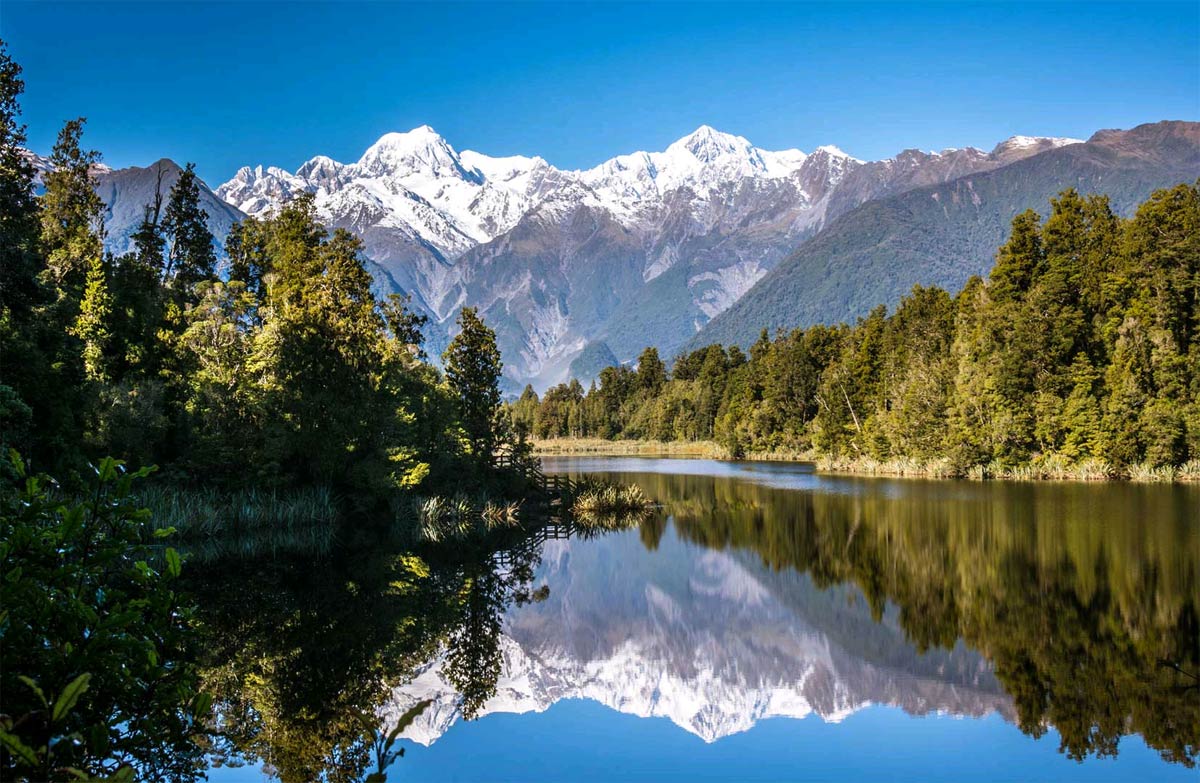 Photo doc.govt.nz
Photo doc.govt.nz
Crater Lakes of Kelimutu, Indonesia
Not many people outside Asia are aware of the existence of three crater lakes with water of varying colours, but those who have seen them with their own eyes, claim them to be the new wonder of the world. Homeland of mystic valleys, the island of Flores is an enigmatic place, little visited by tourists due to lack of infrastructure.
Flying over Indonesian island lost in the boundless ocean, from afar sight catches perfectly pink spot nested into lush greenery – originally, volcano crater that became one of the legendary Kelimutu Lakes. Banks of three reservoirs is nothing else but a hardened lava. The most surprising is not how lakes emerged, but surreal colours of their waters, which are constantly changing. There is a scientific explanation for the phenomenon: the reservoirs contain high level of minerals, reacting with the gases of the volcano, and thus changing the watercolour. The local Lio tribe have their own version of lakes variability. They believe Kelimutu to be a sacred abode of ghosts - the spiritual resting place of their ancestors.
West crater with a clear green water was dubbed as the Lake of Old People, this is where it is said the spirits of the old who have led righteous lives go to rest. The other two lakelets huddle close to each other, sharing a crater wall: the Lake of Young Men and Maidens is characteristically turquoise, and the Enchanted Lake can often be blood red. According to legend, this is the one where the bad people go. Common wall between these two lakes is a fine line between the good and the evil. According to legend, each time when water changing its colour, mood of the dead souls is also amenable to change. Especially instability the Lake of Young Men and Maidens: in the last quarter of a century it has changed the water colour twelve times.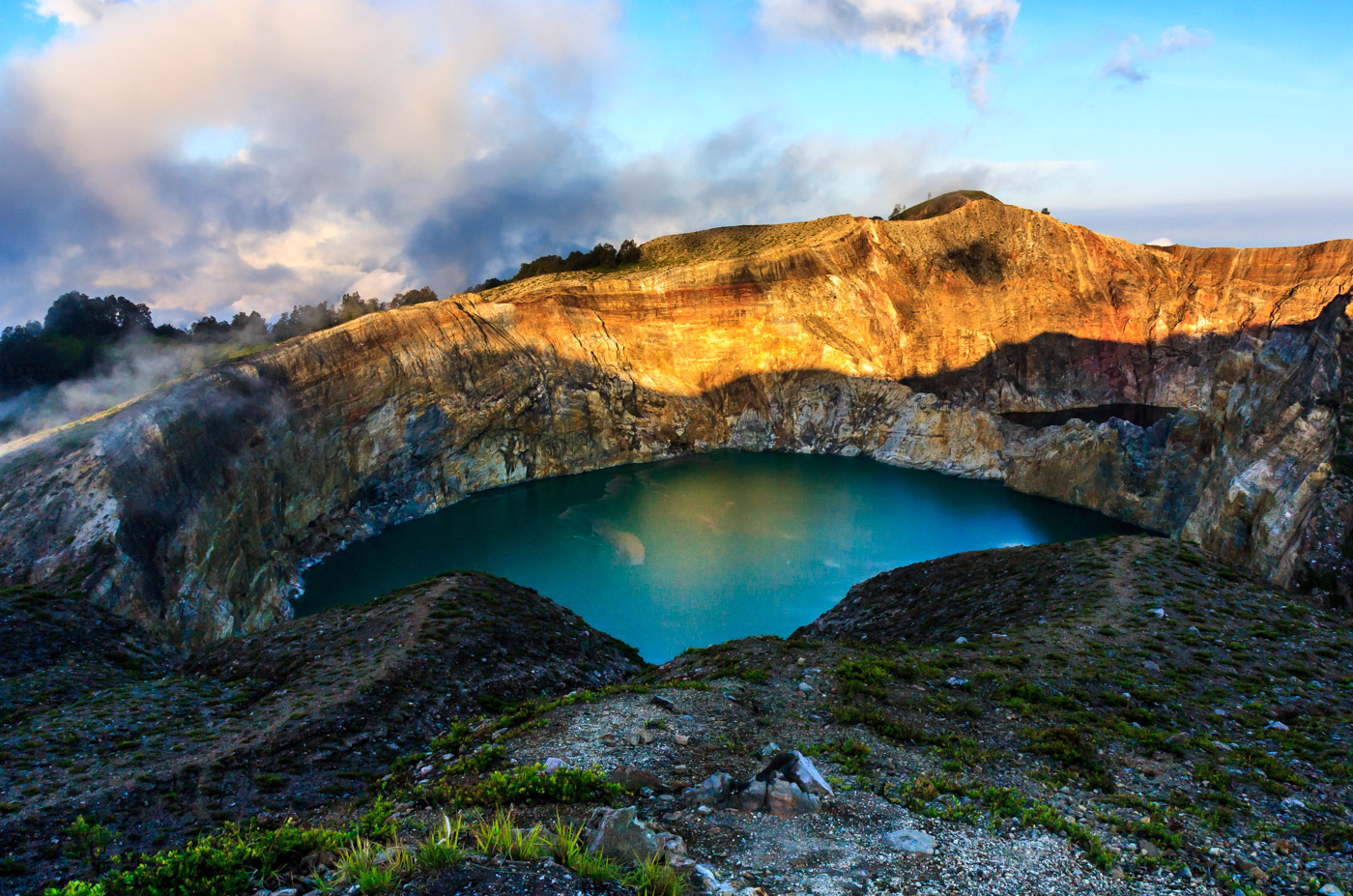 Photo terrytreks.com
Photo terrytreks.com
Moraine Lake, Canada
Another lake in our list owes its existence to the melted glacier. Looking at the Valley of the Ten Peaks framed by the mountains, at first glance it may seem that it is a painting created in bright strokes: clear sky, snowy peaks as if sprinkled with feathers, alluring sapphire water surface and the forest breathing with the freshness of the early morning conifer. Walter Wilcox discovered this body of water about 200 years ago and gave it the name of Moraine. Later, he admitted that the time spent alone with a beautiful lake, was the happiest in his life - so bewitched was the explorer with the local landscapes.
Having found its refuge in the territory of Canada Banff National Park, glacially-fed pond peacefully exists side by side with majestic Wenkchemna Peak, admiring its mirrored reflection in its clear waters. The water level in the lake rises strongly in June, this time its depth reflects the whole spectrum of shades of blue, which is caused by the refraction of light. At such moments, it is impossible to see where Moraine Lake ends and sky begins.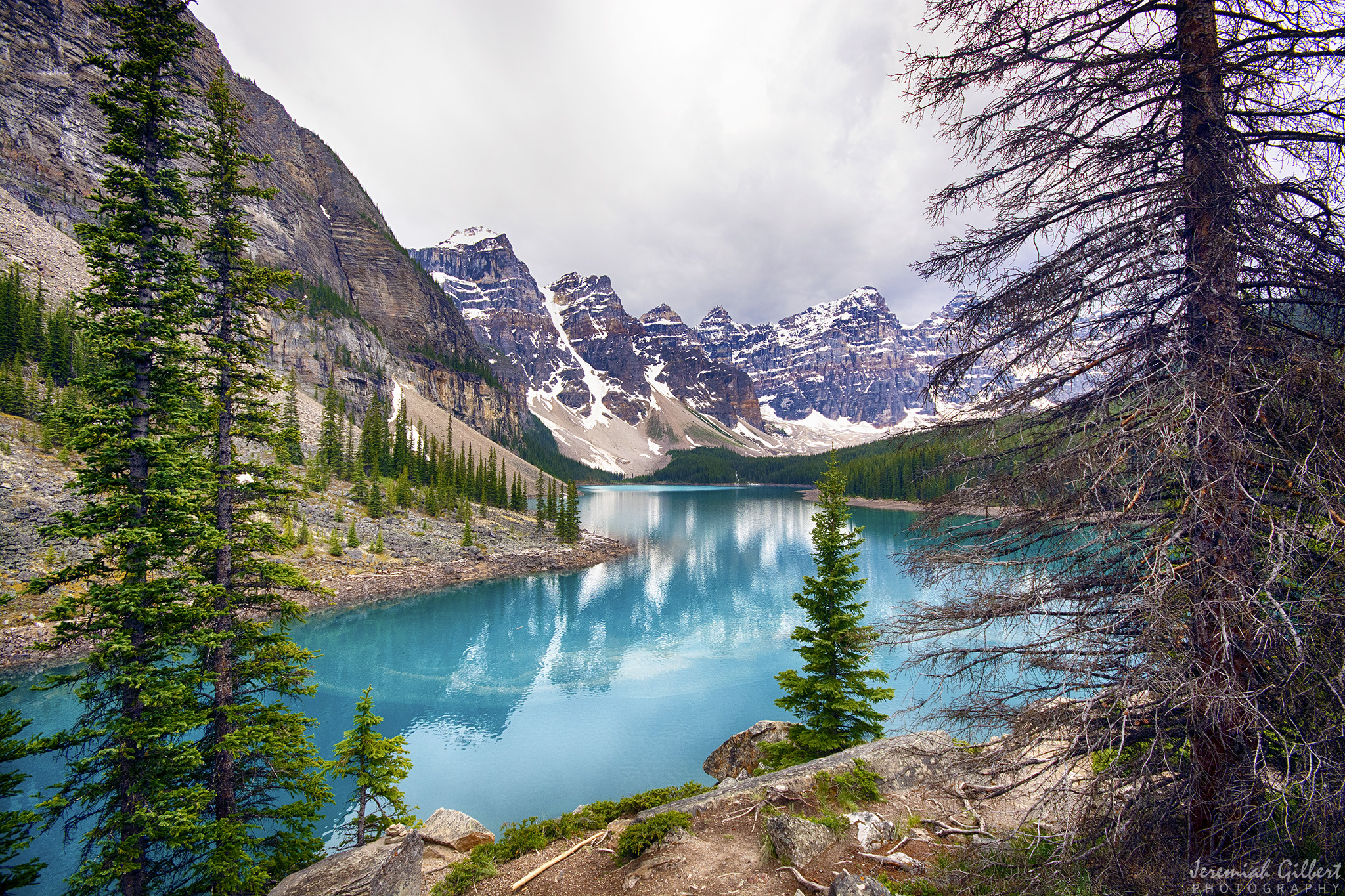 Photo jeremiahgilbert.com
Photo jeremiahgilbert.com
Lake Nakuru, Kenya
Nakuru Lake has one distinguishing feature, which no other lake on the planet can boast. Covered with a carpet of algae, it lures countless flocks of graceful flamingos who love to feed on green algae. Birds fill the Kenyan lake so much, that from the sky it may seem as if the pond turned into a fluffy pink island. Feathery guests feel very comfortable in these waters, in spite of the fact that the Nakuru Lake is saturated with sodium carbonate, or soda, causing burning upon contact. Such properties the lake received from volcanic sources, filled the Nakuru Lake with caustic substances. Incredibly salt lake does not bring discomfort to the majestic birds and does not prevent them of sitting on the dark blue water as on a throne.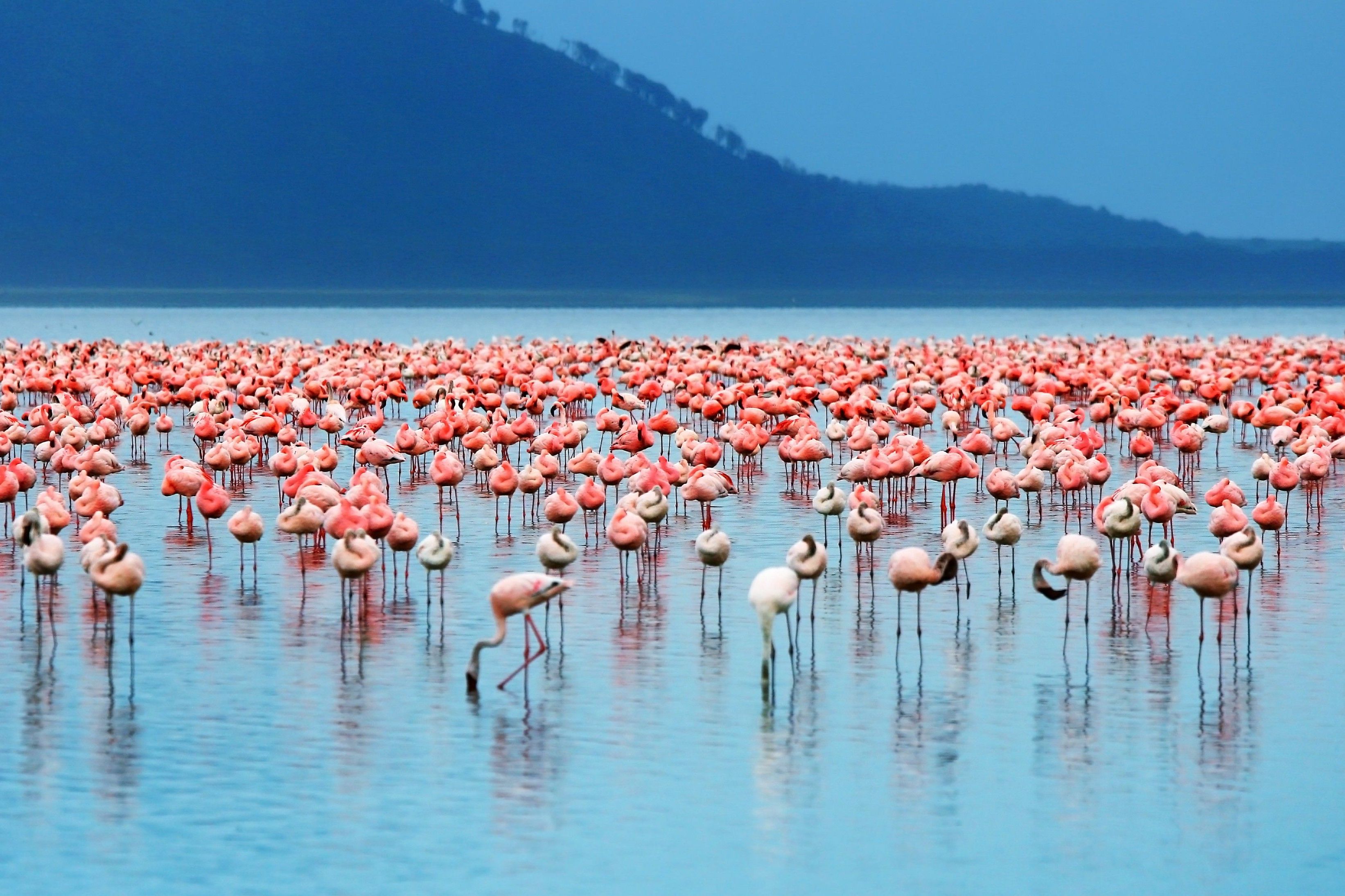
Photo pinterest.com
Mountain valleys, amazing forest of milkweed and acacia, sleeping old Menengai volcano make this place the cradle of authentic African nature that entices many tourists. To preserve this little world of wildlife, the lake and coastal areas have been protected as the National Park preserving the most beautiful birds on earth long-legged pink flamingo.
Natron, Tanzania
The Natron Lake is an evidence that beauty can be both astonishing and frightening. This body of water was named after mineral Natrona present in its water, which works as a trap for living creatures. The thing is that when the temperature rises up to 60°C, this component starts to evaporate, the alkalinity of the water reaches the prohibitive point, evoking specific types of bacteria. They paint a lake in a russet-red colour, making it immensely dangerous. Careless birds and animals in the water are immediately petrified by poisonous liquid of Natron Lake, covering their skeletons with solid crust of minerals. Thus, numerous stone sculptures, forever gone into oblivion, resemble mythical picture on the surface of the deadly waters. Fatal impact of the local water on fauna was first noticed by Nick Brandt, a photographer traveling through Africa in search of bizarre pictures, which he soon presented to the public in his frightening and phantasmagorical photo essay.
Despite the danger hidden in the pond, small flamingos have chosen its islands. Increased water temperature is a kind of incubator for their eggs - long-legged birds hatch their young here all year round. In addition, a specific odour coming from the lake, drives predators away.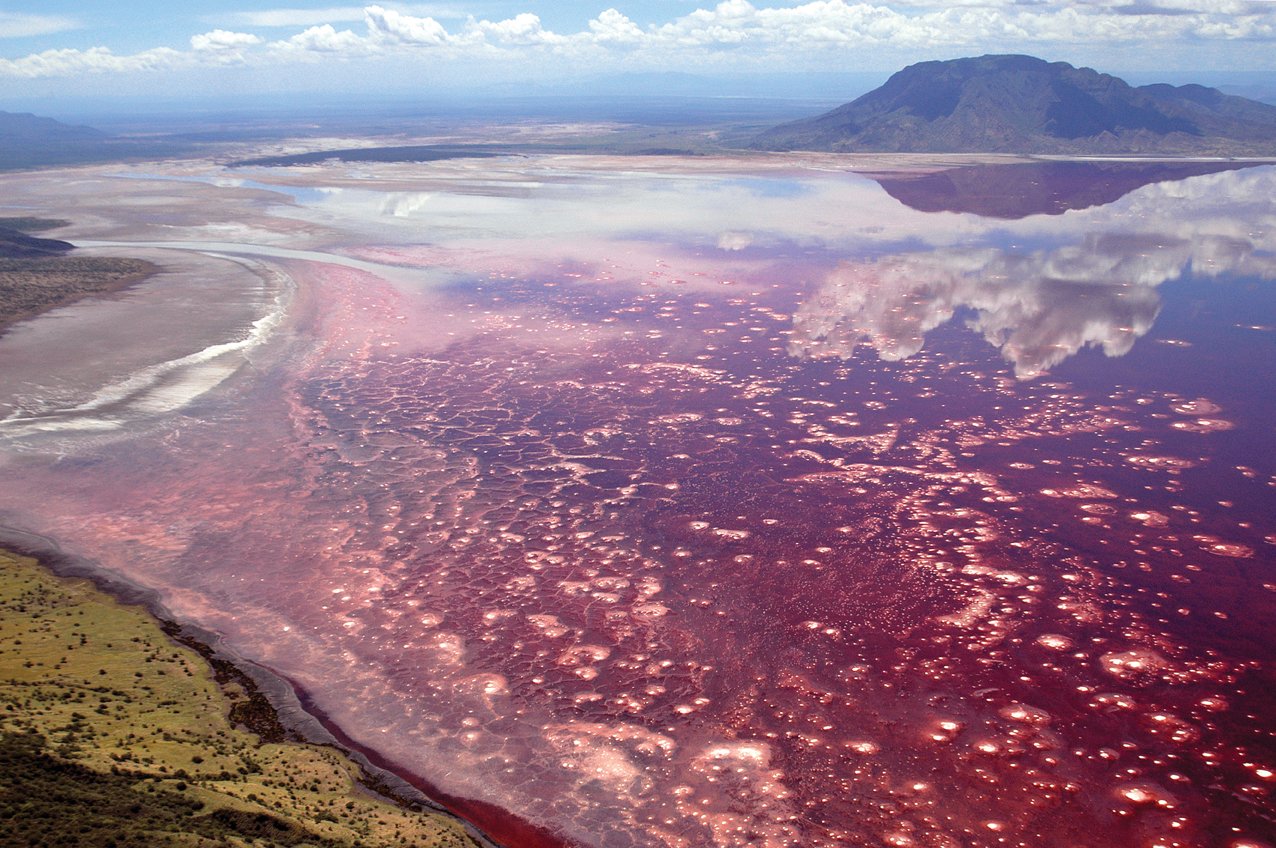 Photo busy.org
Photo busy.org
Lake Hillier, Australia
Pink Lake, as it is also referred to, is located in Western Australia, on the Recherche Archipelago. From the bird's-eye view the lake looks like a huge cake covered with icing, as its water is of a bright pink colour. The Lake Hiller is unsolved natural phenomenon with surprising shade, and it is not an optical illusion, or refraction of light. Analysing the origin of the reservoir, scientists were baffled by the exact cause, although they have narrowed it down to a few microorganisms and bacteria that live in the lake's salty deposits. However, having carefully studied the underwater world with a rocky bottom, they found out that these organisms do not live there, and the theory was admitted as erroneous.
Hidden in dense and far-flung island of eucalyptus forest, Hiller can only be reached via air routes, crossing the azure waters of the Pacific Ocean. Its purple expanse in a white fringe of sand beckons from afar to scoop up in the palm its syrup water and feel how it runs slowly through your fingers. Although pink pond is considered immensely salty - it even once served as a salt production place - plunging into the water is quite safe, but irrational as the lake is too shallow.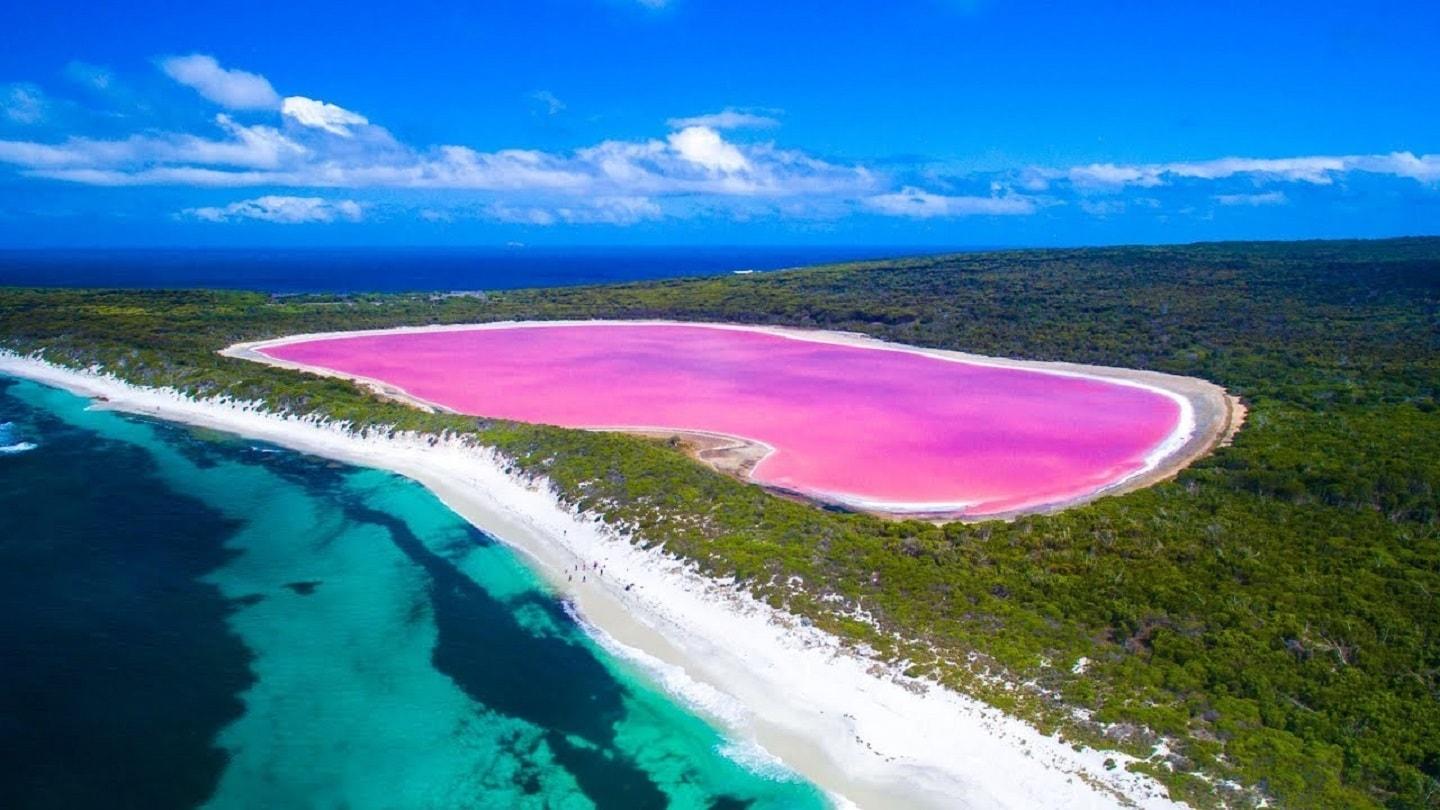 Photo amazing.zone
Photo amazing.zone
Gippsland Lakes, Australia
To see the neon lamp of gigantic size illuminating with soft blue light, inspired travellers go to the amazing Australian Gippsland Lakes. It is known, that the natural phenomenon of bioluminescence can be found only in the depths of ocean, where day light loses its power, obeying to pitch darkness. However, Gippsland Lakes is a unique exception since a miracle of nature manifested itself on a global scale in this shallow pond. To the delight of visitors, the lakes have a special magic - they spread fluorescent glow out in the dark. Microorganisms that live in the depths of the waters cause this phenomenon, having uncanny ability to release their energy. A rare type of algae Noctiluca scintillans can not be seen with the human eye, but their bright light is glowing through inky night. Blue shimmering water, a scattering of stars on the distant horizon, night coolness - these places do have something to impress. Photo glcbc.org.au
Photo glcbc.org.au
Cover photo spotlight.it-notes.ru





















